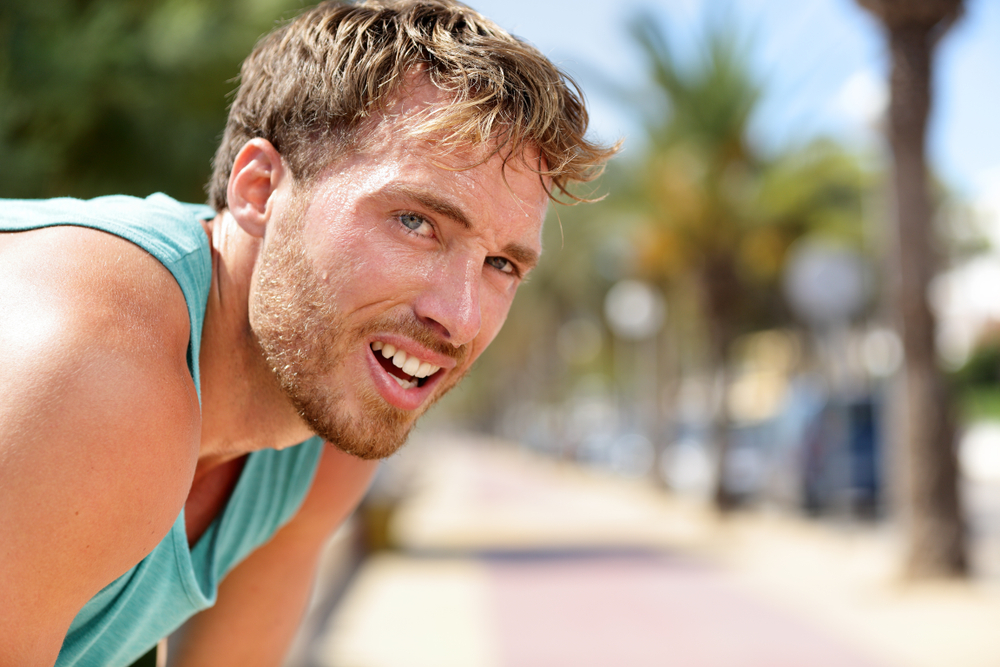Enjoying the Summer by Avoiding Heat Injuries
Dan Phillips MD
With the coming of summer also comes hot weather. We generally ease into warm weather and have time to adjust unless the weather turns hot quickly, as has occurred recently.
Acclimatization to heat occurs over several days when exposed to hot weather, during which time the body alters the composition of sweat so there isn’t excessive loss of electrolytes. The body cools by several methods, one of which is sweating; the body produces sweat in response to heat, and the sweat then evaporates and cools the skin.
There are a few conditions where sweating doesn’t work well to cool the body, such as:
-when there is little or no breeze, therefore sweat evaporates slowly or not at all;
-when the air temperature is higher than body temperature (a 99 or 100 degree day),
and the sweat can’t rapidly evaporate; and
-when the humidity is high (90% or more), and evaporation doesn’t occur very quickly.
Heat injuries typically occur on very warm days with little breeze and high humidity. Heat injuries are defined as heat rash (“prickly heat”), heat cramps, heat exhaustion and heat stroke. While each has a name and symptoms, they are really a continuation of the same problem and can progress, in severe cases, fairly rapidly.
Heat rash is due to sweat glands getting blocked, and usually occurs in areas covered by clothes. It is a typically a mild problem, simply requiring antihistamines, skin cleansing and soothing lotions.
Heat cramps are usually due to inadequate hydration, or excessive salt/electrolyte losses, causing muscle cramps. Heat cramps can be very painful, and are treated by stopping exertion, cooling down, and taking in fluids by mouth (such as sports drinks) or having fluids administered through an IV. They are typical in athletes competing during very warm temperatures and can be prevented by increasing the intake of fluids like sports drinks before and during competition. Hydration to keep clear urine is essential; frequent breaks are required.
Heat exhaustion is just that: profound exhaustion related to excessive heat exposure. There may or may not be muscle cramps, but many feel profound fatigue, weak arms or legs, and sometime nausea and vomiting. Dizziness, fast heart rate, and low blood pressure can occur……….in general, the person just “feels terrible”. Treatment is removal from the heat, cooling down, and in many cases IV hydration and observation in a medical facility while the symptoms resolve. Often, lab tests are obtained to assure there is not muscle breakdown and assure the kidneys are working properly.
Heat stroke is the most serious condition and can be life threatening. In this condition the body has lost all control of temperature regulation. Temperatures can be as high as 107 or more, and at this level internal organ damage can and does occur. The patients are generally confused, sometimes even unconscious, and require emergency cooling as rapidly as possible if they are to survive. Most, if not all these cases, require hospital admission in an intensive care unit.
Rapid cooling is necessary for survival in heat stroke. Application of ice to the armpits, groins and head along with a mist spray of water are needed, and moving air, such as from a fan, is helpful.
The best treatment for all these conditions is prevention; drinking plenty of fluids is essential. If a person is thirsty, or their urine is dark (or they are making urine less often than usual), fluids are needed. For workers exposed to the heat, fluids are key as are frequent breaks in the shade. For all persons, its time to get in the shade and cool down when one begins to feel weak, dizzy, or excessively thirsty.
While plain water is good, it should not be the only fluid taken in. Electrolyte containing drinks (sports drinks) are vital to replace losses of electrolytes. In general, for those who are healthy and working outside, a bottle of water should be alternated with a bottle of sports drink. Also important is the temperature of the drinks: water or fluids in the “cool” 70 degree range can be “gulped down” and therefore large amounts can be taken it rapidly, whereas ice cold fluids tend to be sipped and not as much volume taken in.
While many heat injuries occur in those working in the heat, the elderly and very young (even those not exerting themselves) are also at risk, as are those with chronic medical conditions. Hot days followed by nights in rooms with no air conditioning can lead to heat injuries, as the individual never really “cools down”.
Once a heat injury occurs, the person may not feel well for several days. Rapid cooling and fluids are the treatment for most heat related events, but often it takes several days to return to feeling normal and being able to once again tolerate the hot weather.
Those with chronic medical conditions, or conditions which restrict the ability to exercise or do prolonged exertion, should plan to stay indoors in air conditioning during heat waves. Remember to check on elderly neighbors or those without air conditioning, and consider pets as well, as they too are subject to heat injuries.
If you feel that you are experiencing a non-life threatening illness or injury that needs immediate medical attention, please visit one of our locations today.
Dr Dan Phillips is an Emergency Physician by training, and is now the Chief Medical Officer of Velocity Urgent Care LLC based in Williamsburg, VA.

